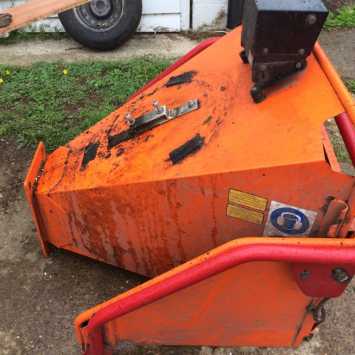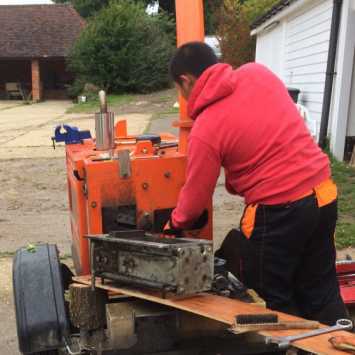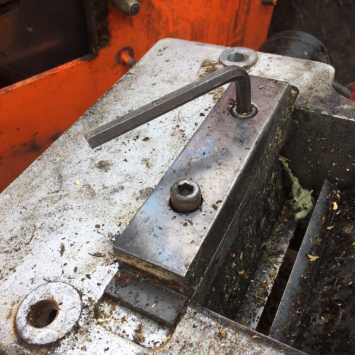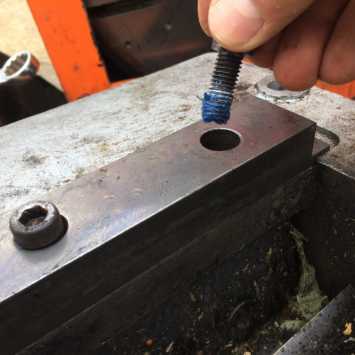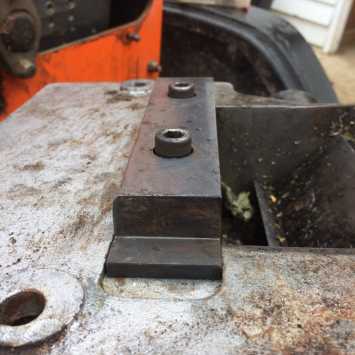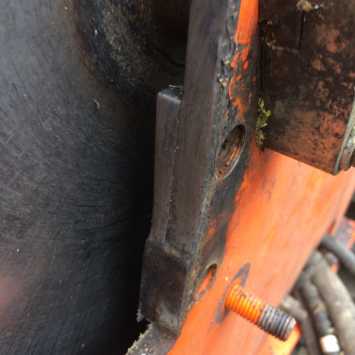On a recent Lantra Awards brushwood chipper course, the anvil or counter knife was maintained on our Timberwolf TW150. All the Lantra Awards Machinery courses we run have a similar format:
- Risk assessment, emergency planning and machine function overview, linking to relevant legislation.
- Machine inspection, basic operator maintenance & cutting mechanism replacement
- Site inspection and set up to then use the machine
FISA Guide – Woodchippers gives a handy checklist. We recommend taking a quick look before coming along to a course.
The anvil is often the key to a poorly performing woodchipper where blade replacement alone is not improving the quality of the chipped material. This is because of the way it acts in the cutting process, as material is fed generally by hydraulic rollers into the cutting chamber the blades pass closely to the anvil and cut the brash. When the anvil is worn, this cutting is less efficient and ‘clean’, resulting in tell tale sheared or stripped longer sections of discarded twigs.
As with all maintenance operations, the machine must be stopped and secured with no chance of it being started. It may therefore be appropriate to disconnect the battery.
It’s a simple matter on these Timberwolf machines to get to the roller box where the anvil is situated by removing the four in feed hopper nuts and the 2 bolts below on a support bracket, together with the electrical control box connection underneath. This needs two people and a plan to make sure no fingers get trapped! With the spare wheel removed the load is lightened.
Once out the way the roller box is visible, this would allow ready access to change the rollers when they become blunt or damaged. Removing the roller motors does make the housing box more manageable and this can then be taken from the machine for repair, but on this occasion I decided to leave them in and place the lot carefully on a plywood base on top of the hydraulic oil and fuel tanks.
With the anvil uppermost it was clearly worn, but because this machine has a reversible anvil it could be removed by way of the two allen screws, turned and then replaced using locktight on the threads.
There is also a side anvil on these machines secured onto the cutting wheel cover with two countersunk allen screws which is reversible.
A marked improvement in cutting performance was observed later on in the day using the machine in the practical part of the course.
If you would like more information on Brushwood Chipper maintenance or any other arboricultural equipment, please get in touch with us or book on to our Wood Chipper Course in Sussex - we’d love to hear from you!

